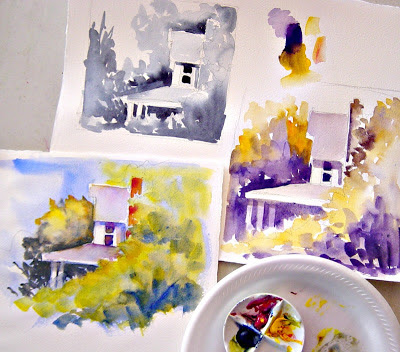Demonstrations from Recent Classes
I am always talking about keeping things simple. KEEP IT SIMPLE. Don't try so hard.Because it is winter (very winter here in northern Michigan) we certainly can't paint outside. We get a little tired of still lifes, so we paint from sketches and photographs. When we look at a photograph, our brains seem to tell us we have to paint the whole thing - the whole scene and all the details.
Each of the paintings, above, was done from photographs with a lot more information. The photo reference for the painting in the top left showed the whole house and the garden next door. The painting in the top right was taken from a photo that showed a lot of dark cast shadows from the trees and and a cottage on the left side. The bottom painting was done from a photo of a whole house and the door was very plain.
What we talk about when we're looking at our reference photos is what is it that attracts us, and how simply can we state that. These are very small paintings - about 8" X 5".
A big painting project is always fun and challenging. but keeping the brush moving with some small, quick paintings is very rewarding too. Dig out some photographs and see what you can crop and simplify.



